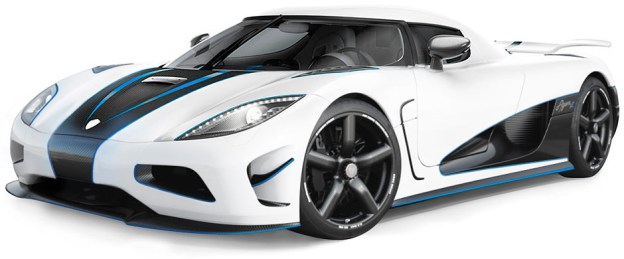
Over the last 10 years, Swedish supercar maker Koenigsegg has delivered 100 of its record-breaking cars to customers all over the world. While that number might seem incredibly low by comparison to other supercar automakers like Ferrari, it’s in fact quite an impressive feat.
Creating a supercar company from literally nothing takes a lot of work, especially one that is capable of creating the world’s fastest production car, as Koenigsegg had with its CCR model a few years ago. Before the Bugatti Veyron came out, Koenigsegg had the world’s fastest car, capable of going 241.63mph.
Since its spot at the top was taken, the minds at Koenigsegg have been hard at work to break further barriers. In late 2011, the Agera R model set the Guinness book of world records 0-300kmh time at 21.19 seconds thanks to its 1,115 horsepower engine.
While Koenigsegg hasn’t broken any records lately, it has just recently marked 100 vehicles delivered in the last ten years. Christian Koenigsegg and his team are commemorating the occasion with some limited run renderings to be announced in the near future. Watch their celebratory video below.
Hopefully with its groundbreaking engineering feats like we’ve seen over the last few months with its “free valve” system and its lightweight transmissions, Koenigsegg will be around for another 100 cars. At least.
Koenigsegg – 0 to 100 in 10 years from Koenigsegg Automotive on Vimeo.
Editors' Recommendations
- This Graco car seat lasts for ten years, and it’s 25% off for Black Friday
- Fiat-Chrysler pressured dealers to take extra inventory to boost sales numbers
- Most people want to keep their cars away from full self-driving, study says
- Chinese carmaker Zotye signs 100 dealerships in the U.S.
- Vintage car group says EV classics aren’t real classics. Here’s why that’s wrong


